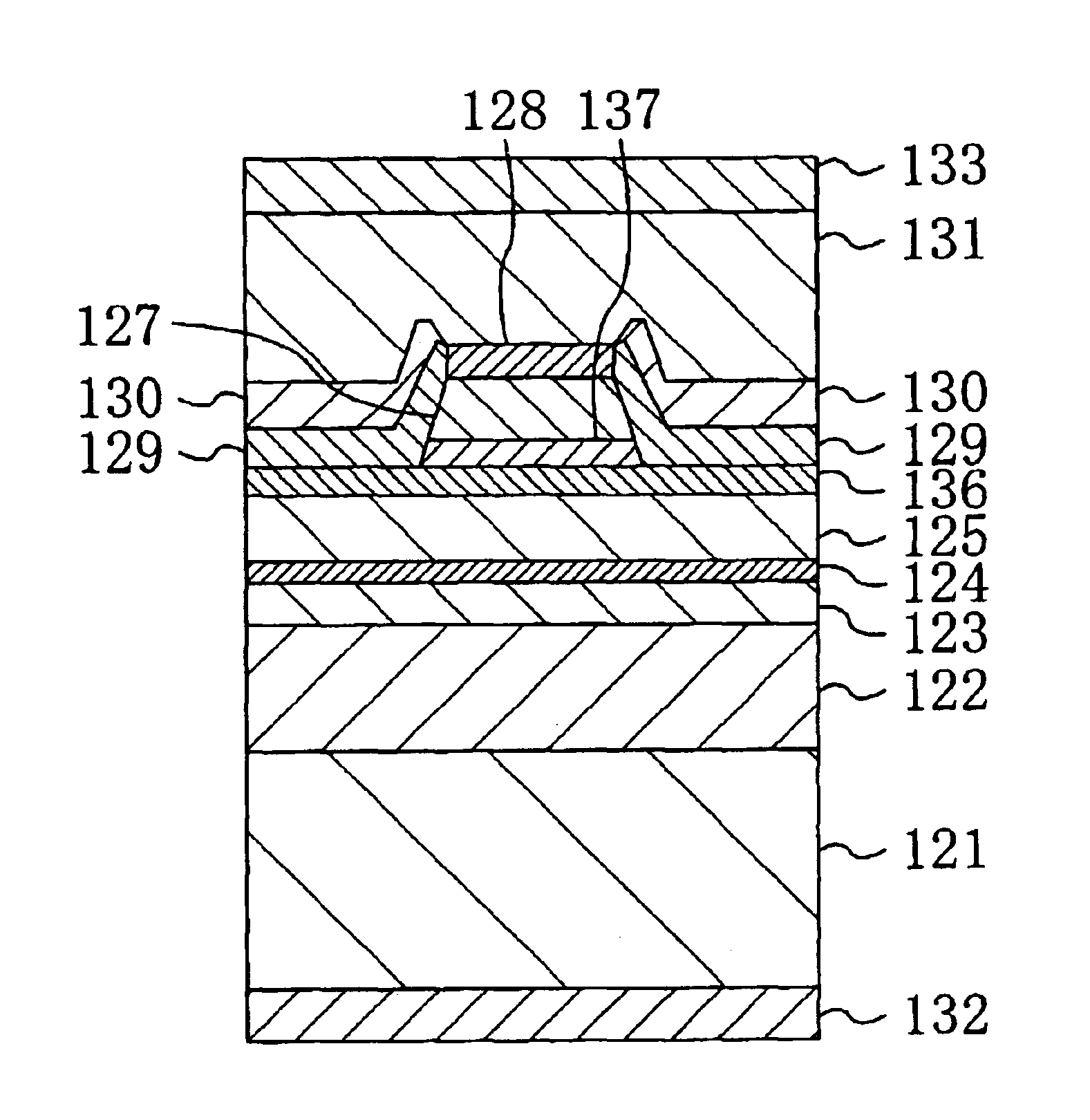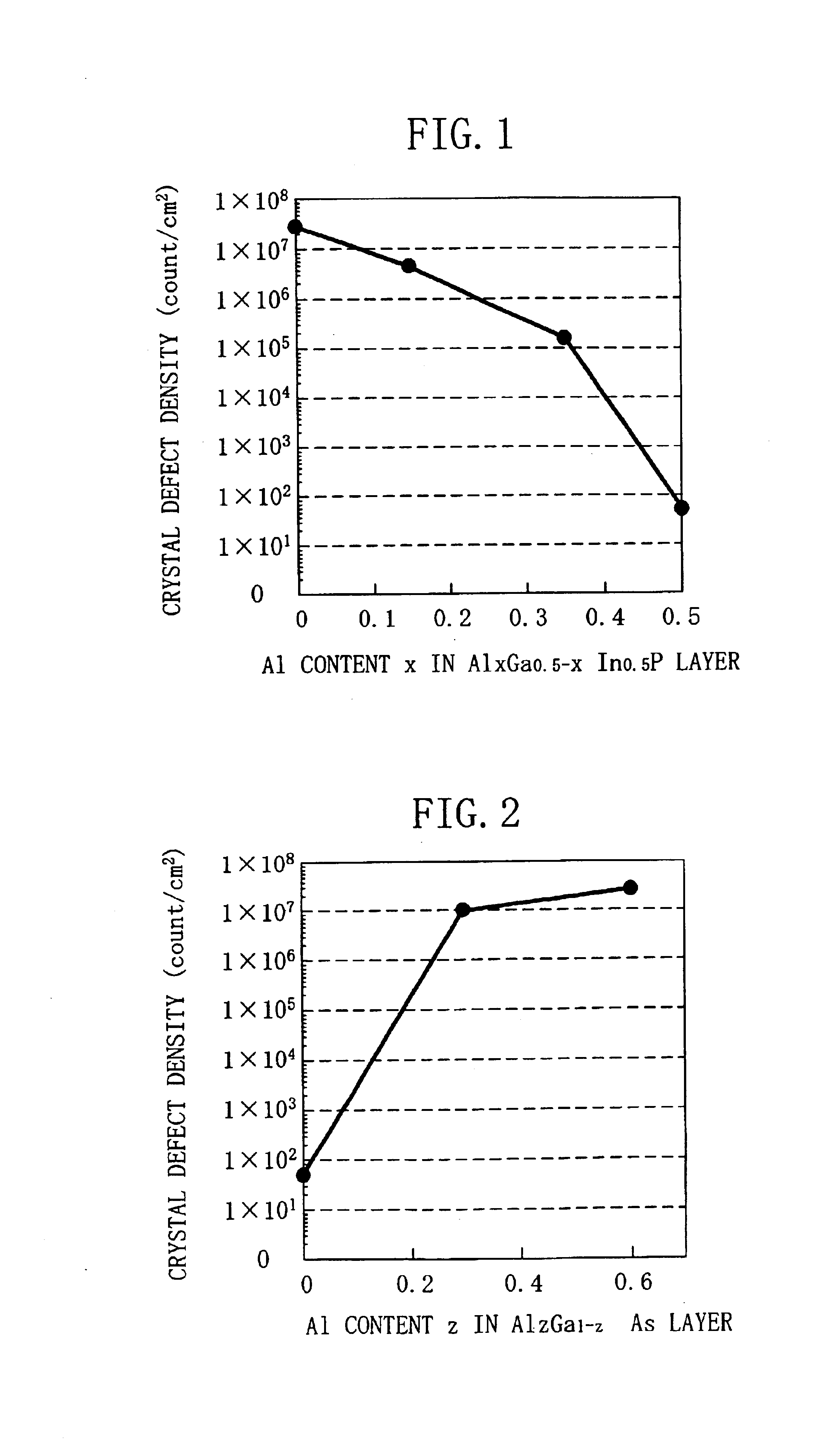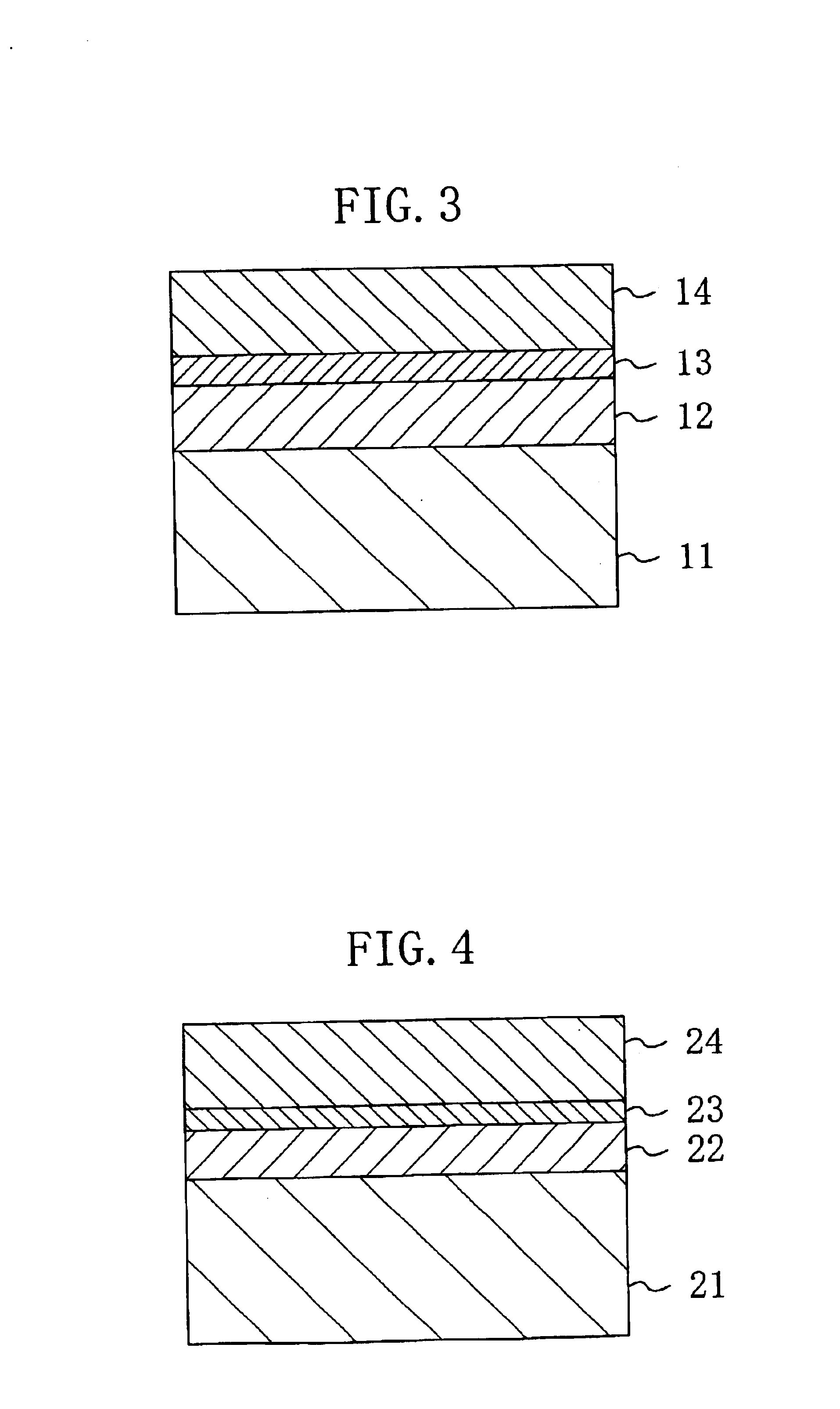Group III-V compound semiconductor and group III-V compound semiconductor device using the same
a compound semiconductor and semiconductor technology, applied in the direction of semiconductor lasers, basic electric elements, lasers, etc., can solve the problems of large number of crystal defects, difficult to realize a group iii-v compound semiconductor, and crystal defect density increase, so as to reduce the density of crystal defects
- Summary
- Abstract
- Description
- Claims
- Application Information
AI Technical Summary
Benefits of technology
Problems solved by technology
Method used
Image
Examples
first embodiment
The first embodiment of the present invention will now be described with reference to the drawings.
FIG. 3 is a cross-sectional view illustrating a group III-V compound semiconductor layered structure according to the first embodiment. As illustrated in FIG. 3, an AlGaInP layer 12 made of Al0.35Ga0.15In0.5P having a thickness of about 0.2 μm, a buffer layer 13 made of Al0.5In0.5P having a thickness of about 1.1 nm, and an AlGaAs layer 14 made of Al0.6Ga0.4As having a thickness of about 0.3 μm, are deposited in this order on a substrate 11 made of GaAs, for example.
A method for manufacturing the group III-V compound semiconductor layered structure of the first embodiment will now be described.
The group III-V compound semiconductor layered structure of the first embodiment can be formed by successively growing the semiconductor layers on the substrate 11 made of GaAs by using an MOVPE method, for example.
Specifically, triethylgallium (TEG), trimethylaluminum (TMA) and trimethylindium (...
second embodiment
The second embodiment of the present invention will now be described with reference to the drawings.
FIG. 4 is a cross-sectional view illustrating a group III-V compound semiconductor layered structure according to the second embodiment. As illustrated in FIG. 4, an AlGaInP layer 22 made of Ga0.5In0.5P having a thickness of about 30 nm, a buffer layer 23 made of GaAs having a thickness of about 1.6 nm, and an AlGaAs layer 24 made of Al0.6Ga0.4As having a thickness of about 0.3 μm, are deposited on a substrate 21 made of GaAs.
Such a group III-V compound semiconductor layered structure can be formed by using an MOVPE method, for example, as in the first embodiment.
A feature of the second embodiment is that the AlGaAs layer 24 is formed on the AlGaInP layer 22 via the buffer layer 23 made of AlGaAs, and the Al content in the buffer layer 23 is smaller than that in the AlGaAs layer 24. Thus, instead of depositing the AlGaAs layer 24 made of Al0.6Ga0.4As directly on the AlGaInP layer 22, ...
third embodiment
A semiconductor laser device according to the third embodiment will now be described with reference to the drawings.
FIG. 5 is a cross-sectional view illustrating the semiconductor laser device according to the third embodiment of the present invention. As illustrated in FIG. 5, an n-type cladding layer, 32 made of n-type AlGaInP, an active layer 33 including a multiple quantum well and optical guiding layers interposing the multiple quantum well therebetween, a buffer layer 34 made of AlGaInP, a dopant diffusion preventing layer 35 made of AlGaAs, and a first p-type cladding layer 36 made of p-type AlGaInP, are deposited in this order on a substrate 31 made of n-type GaAs.
Note that in the active layer 33, the multiple quantum well has an alternating pattern of three well layers made of GaInP and two barrier layers made of AlGaInP, with two of the well layers being the outermost layers of the multiple quantum well, and an optical guiding layer made of AlGaInP is formed on the upper s...
PUM
 Login to View More
Login to View More Abstract
Description
Claims
Application Information
 Login to View More
Login to View More - R&D
- Intellectual Property
- Life Sciences
- Materials
- Tech Scout
- Unparalleled Data Quality
- Higher Quality Content
- 60% Fewer Hallucinations
Browse by: Latest US Patents, China's latest patents, Technical Efficacy Thesaurus, Application Domain, Technology Topic, Popular Technical Reports.
© 2025 PatSnap. All rights reserved.Legal|Privacy policy|Modern Slavery Act Transparency Statement|Sitemap|About US| Contact US: help@patsnap.com



